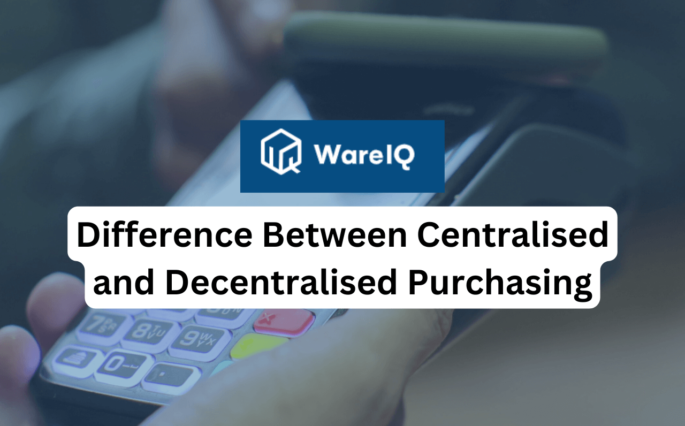Maximizing Profitability with Consignment Inventory Management

Retailers can acquire and sell their stock in a variety of ways. Mostly, retailers buy inventory and store it in their retail warehouses so that customers can buy it.
Since the retailer only purchases when the stock is sold, wholesalers take the most risk with their inventory. In this instance, the wholesaler holds the inventory until it is sold. Retailers return their stock to the wholesaler if it isn’t bought.
Consignment inventory management has many benefits for retailers. First, the wholesaler will bear all inventory carrying costs. When a retailer doesn’t have enough cash, consigned inventory is the best option.

In the competitive business landscape, any company’s success and growth depends on optimizing profitability. Businesses can lower costs and increase profitability by using consignment inventory, which allows them to stock and sell goods without actually purchasing them. We will discuss in this blog how consignment inventory management can help maximize profitability and the best practices for successfully applying this approach.
- Understanding Consignment Inventory Management
- Why Use Consignment Inventory?
- How to Manage Consignment Inventory
- Advantages of Consignment Inventory for Retailers
- Benefits for Suppliers
- Strategies for Successful Consignment Inventory Management
- Potential Challenges and Mitigation
- Consignment Inventory Policy
- Conclusion
Understanding Consignment Inventory Management
- Merchandise that is kept in a store or warehouse but whose ownership remains with the supplier until they are sold to customers is called consignment inventory.
- Once the goods are sold, the supplier retains ownership, and the retailer only pays for the goods after they are sold to the end consumers.
Why Use Consignment Inventory?
Everyone doesn’t have the money to buy stock and wait for customers to buy it. To save time and money, retailers may opt for consignment inventory. As a retailer, you should consider consigned inventory for a number of reasons.
Low risk
You can use your capital to buy established goods because you don’t have to pay for the inventory in advance. You can consign new supplier brands and experiment with the market as a result.
Low cost of ownership
Retailers can reduce ownership costs by looking for consigned goods instead of having a warehouse full of purchased goods.
Better cash flow
Retailers will win in every situation. When they are sceptical about a product, they will not have to spend a lot of money to keep it and check whether customers will buy it.
How to Manage Consignment Inventory
- In order to keep close tabs on goods, both suppliers and retailers must properly manage consignment inventory.
- Managing inventory can be a complicated task for businesses that sell a combination of consigned and non-consigned goods.
- Some organizations are still using spreadsheet-based or even paper-based systems for inventory tracking.
- These methods of tracking inventory are often slow and unreliable, and it makes it difficult for vendors and retailers to work together.
- There are many options for inventory management, but not all of them are designed to handle consignment inventory.
- Inventory management systems, which are designed to simplify the handling of a variety of inventory-related responsibilities, are common use for today’s businesses.
- These solutions ought to track the inventory that the supplier sends to the retailer in the best-case scenario; identify when inventory must be added to the retailer in order to avoid stockouts; and monitor the stock that the supplier needs to replenish.
- These features help suppliers find the goods to buy, reduce the amount they need to stock in their retail stores and enable them to save money on shipping costs.
Advantages of Consignment Inventory for Retailers
Lower Inventory Costs
- Retailers can store goods without paying suppliers in advance.
- Retailers don’t have to take the risk of unsold items because they don’t own the inventory until it is sold.
Increased Cash Flow
- Retailers improve cash flow management because they pay for inventory only after the products are sold.
- Retailers can improve overall liquidity by allocating their funds to other parts of the company.
Beneficial Contracts
- The expectations and obligations of both parties must be laid out in the contract.
- This will include the goods’ prices, the time that the retailer can keep inventory, and who will be responsible for inventory damage.
- Detailed contracts improve cooperation and maintain transparency. It can prevent any potential conflicts and disputes.
Market Expansion
- Reduced upfront costs for retailers because they are not required to purchase inventory.
- Suppliers can increase exposure and sales potential by selling their products in multiple retail outlets.
- Minimizes retailers’ risk of overstocking and lowers carrying costs.
Benefits for Suppliers
Expanded Market Reach
- Suppliers can expand their market reach by placing their goods in several retail outlets.
- Suppliers are able to explore new markets without making a lot of money.
Improved Relationship with Retailers
- Inventory swaps encourage a partnership where both sides work together for mutual benefit.
- Retailers may argue about inventory costs and risk with suppliers.
Strategies for Successful Consignment Inventory Management
Transparent Inventory Tracking
- Use inventory management software to keep track of inventory items’ status and where they are.
- To prevent miscommunication and inventory discrepancies, suppliers and retailers must regularly exchange updates.
Performance-Based Agreements
- Establish objective metrics, like sales velocity and inventory turnover, to measure consignment inventory success.
- Offer rewards or bonuses to sellers who meet certain sales goals.
Demand Forecasting
- To accurately predict demand, use market trends and historical sales data.
- To avoid overstocking or stockouts, adjust inventory levels according to anticipated demand.
Collaborative Marketing Efforts
- Combine marketing campaigns to raise brand awareness and increase product visibility.
- Reduce individual financial burdens by dividing marketing costs between retailers and suppliers.
Potential Challenges and Mitigation
1. Inventory Loss or Damage
Ensure that goods are sufficiently insured so that they are protected against losses or damages while being shipped.
Find and resolve any potential issues with inventory condition through regular inspections.
2. Inventory Accuracy
Regularly audit the consignment inventory records to make sure they are accurate.
To maintain trust and transparency between suppliers and retailers, promptly resolve discrepancies.
3. Inventory Control and Visibility
Keeping track of consigned inventory across multiple places can be difficult.
Difficulty in distinguishing consigned inventory from owned inventory may lead to confusion.
4. Accurate Sales Reporting
Retailers might forget to report actual sales, which causes mistakes in inventory records.
Incomplete or delayed sales data can impact inventory replenishment decisions.
5. Price Disputes
Suppliers and retailers may argue over product prices.
Retailers can sell consigned goods at reduced prices, which affects suppliers’ profitability.
Suggested read: Difference Between Consignor and Consignee: Roles and Responsibilities
Consignment Inventory Policy
The newly adopted managing inventory policy is the Consignment Stock Policy. A CS agreement between a vendor and a buyer requires great cooperation and integration. In actuality, the supplier freely places the product stock in the buyer’s warehouse, and all items remain with the supplier until the buyer picks them up according to its production plan.
While this policy allows the vendor to move its inventory to the buyer’s property, the supplier must ensure that the buyer has an available stock level that is between the minimum S and maximum S values located on the buyer’s property.
The continuous exchange of inventory data levels between the two parties, which is implicit in a CS agreement, allows the buyer to achieve higher service levels by eliminating the demand perturbation that the vendor perceives as a result of the buyer’s order policy.
Several benefits for the buyer:
- Inventory holding costs are reduced because the buyer only pays when the raw material is drawn on.
- A higher service level in comparison to a traditional policy because the vendor guarantees a minimum stock level in the buyer’s warehouse.
- A reduction in administrative costs because traditional policy purchase order processing is more expensive.
- Just-in-time procurement using low replenishment costs.
Also read: Difference Between Consignment And Sale
Conclusion
When it comes to maximizing profitability for both retailers and suppliers, consignment inventory management is a powerful tactic. By cutting inventory costs, increasing cash flow, and increasing market reach, businesses can increase profits and operational efficiency. Consignment inventory implementation is dependent on transparent inventory tracking, performance-based agreements, demand forecasting, and joint marketing efforts. A cooperative consignment partnership will be harmonious and profitable even if obstacles come up. Companies that are looking for long-term growth and higher profitability can benefit greatly from adopting consignment inventory management.







